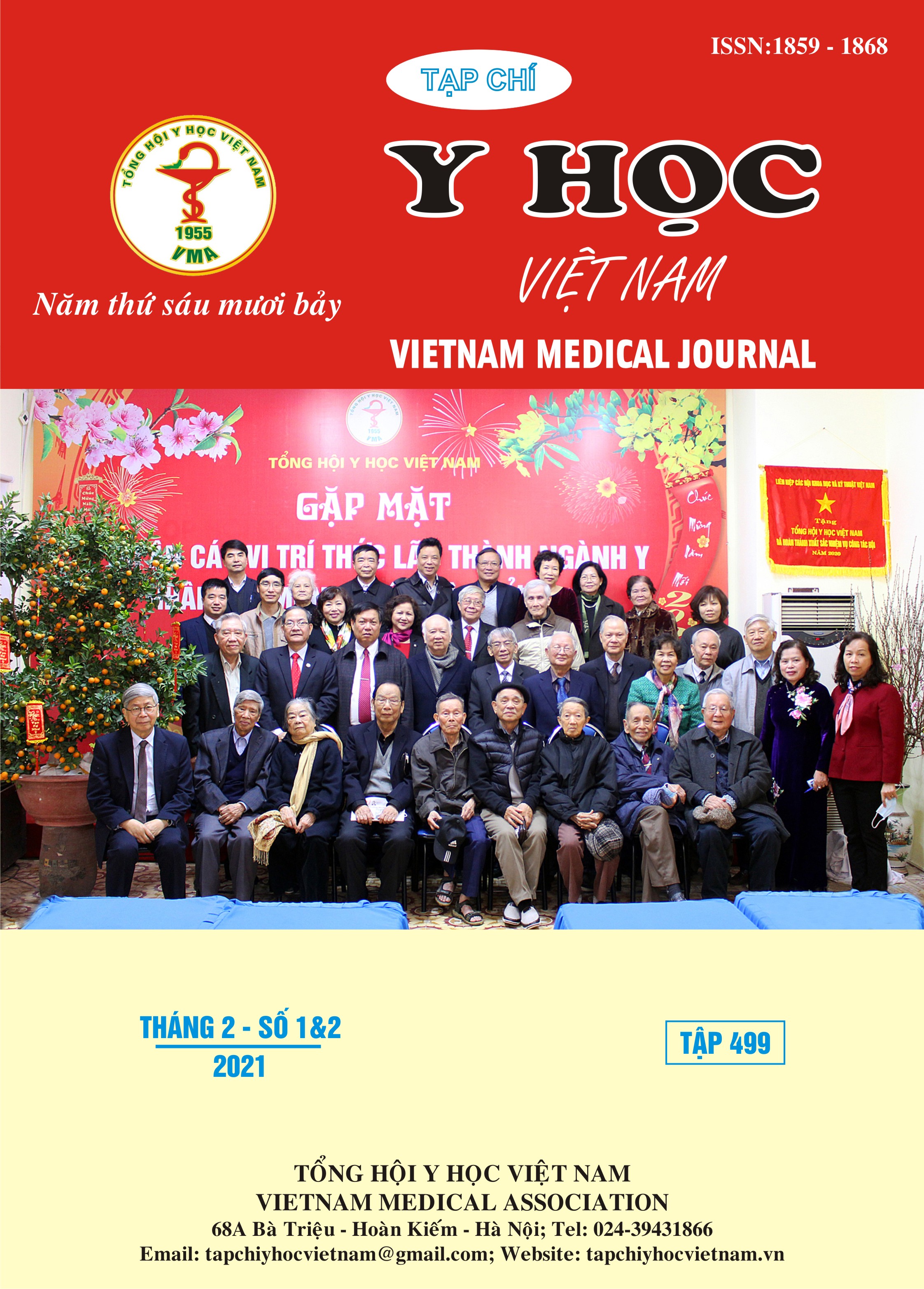COMPARISON BETWEEN BONE SCINTIGRAPHY AND COMPUTED TOMOGRAPHY FOR THE DETECTION OF BONE METASTASES IN HEPATOCELLULAR CARCINOMA
Main Article Content
Abstract
Aim: To compare the diagnostic accuracy of bone scintigraphy (BS) and computed tomography (CT) in detecting skeletal metastases for hepatocellular carcinoma (HCC) patients with suspicious bone metastasis. Methods: A prospective study was carried out in 57 HCC patients. The accuracies of BS and CT were determined by comparing with final diagnosis with criteria obvious progression of the lesion revealed from the follow-up examinations and treatment. Results: This study included 48 male and 9 female, mean age 60.5 ± 12.9. Reasons for bone scintigraphy: Tumor extent surveillance: 54.4%, bone pain: 29.8%, limb weakness: 14%, palpable chest wall mass: 1.8%. There was a significant difference in bone metastatic detection between BS (45.6%) and CT (29.8%), p=0.001. There were 23 metastatic regions on CT, tended to identify more positive lesions in the spine: 14/23, pelvis: 5/23; 45 regions in BS, tended to show more positive lesions in the spine: 19/45, ribs: 12/45. According to the follow-up result and palliative treatment by SBRT, for detecting metastatic bone lesions by CT: Sensitivity = 72.2%, Specificity = 89.7%, Positive Predictive Value = 76.5%, Negative Predictive Value = 87.5%, Accuracy = 84.2%; by BS: Sensitivity = 100%, Specificity = 79.5%, Positive Predictive Value = 69.2%, Negative Predictive Value = 100%, Accuracy = 86.0%. Conclusion: BS has significantly better accuracy than CT in detecting metastatic HCC bone lesions, but to determine bone metastases, careful history taking, meticulous physical examination and perfoming many bone scan methods are very important.
Article Details
Keywords
Hepatocellular carcinoma, Bone metastasis, Tc-99m MDP bone scintigraphy
References
2. Sakdapetsiri W. (2017). Agreement of bone metastasis detection between bone scintigraphy and whole body-MRI in hepatocellular carcinoma. Chula Med J, 61: 322-331.
3. Yen RF, Chen CY, Cheng MF, et al. (2010). The diagnostic and prognostic effectiveness of F-18 sodium fluoride PET-CT in detecting bone metastases for hepatocellular carcinoma patients. Nucl Med Commun., 31(7):637-45.
4. Langsteger W, Rezaee A, Pirich C, et al. (2016). 18F-NaF-PET/CT and 99mTc-MDP Bone Scintigraphy in the Detection of Bone Metastases in Prostate Cancer. Semin Nucl Med, 46(6):491-501.
5. Verma S, Kumar N, Kheruka S, et al. (2016). Extraosseous 99mTc-methylene diphosphonate uptake on bone scan: Unusual scenario. Indian J Nucl Med, 31(4): 280–282.
6. Zhang L, He Q, Zhou T, et al. (2019). Accurate characterization of 99mTc-MDP uptake in extraosseous neoplasm mimicking bone metastasis on whole-body bone scan: contribution of SPECT/CT. BMC Medical Imaging, 19: 44.
7. Chen CY, Wu K, Lin WH, et al. (2012). High false negative rate of Tc-99m MDP whole-body bone scintigraphy in detecting skeletal metastases for patients with hepatoma. Journal of the Formosan Medical Association, 111(3): 140-146.
8. Bolaños DC, Wong LR, González DN, et al. (2017). Sensitivity, Specificity, Predictive Values, and Accuracy of Three Diagnostic Tests to Predict Inferior Alveolar Nerve Blockade Failure in Symptomatic Irreversible Pulpitis. Pain Research and Management, 2017, https:// doi.org/10.1155/2017/3108940.


